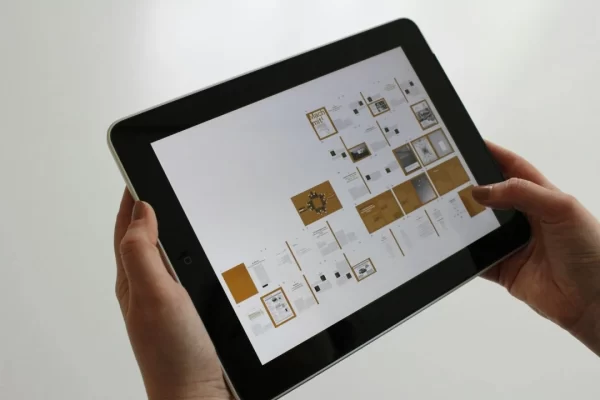User experience (UX) design primarily focuses on achieving user satisfaction by enhancing a website’s usability, design, accessibility and performance. It essentially refers to designing a website in a way that determines the end user’s experience.
An effective UX design is crucial to your business’s performance as the scope of digital marketing is rapidly expanding. Here are some tips to ensure a good approach to UX design:
- Mind Mapping
Constructing a mind map helps you identify the relationship between data and information while facilitating you to come up with new ideas. It is essentially a diagram where a central idea can be branched off into related ideas to flesh out the concept of your website.
Start by entering your main idea, followed by attaching ‘nodes’ or subtopics. Each can then be broken down into sub nodes, which can be split into further sub nodes. If you feel that you are losing track of the main concept at any point, you can simply review the mind map to get your thought process back on track.
- User Research
This is a crucial step that allows you to adopt an approach in accordance with the user’s perspective. It enables you to see, feel and experience from the user’s point of view.
Research of this kind helps you make important decisions about information architecture and solving usability issues that you might have otherwise overlooked. Methods you can use to conduct user research include observations, surveys, focus groups, diary studies and competitive analyses.
- Creating User Personas
A user persona is an abstract representation of a typical user. It symbolises users with similar characteristics, who may be interested in your website.
After acquiring data about users through research, the next step is to create 1-3 user personas to summarise that information. A user persona lets you tune in to the requirements, goals and observed behaviour patterns of your target audience.
The aim here is to keep in mind the preferences of the users who may be interested in your product or service.
- Storyboards
The concept of a storyboard is borrowed from the movie industry. It is in the form of a comic and is used to outline users’ actions and the situations under which those actions are performed.
It is used to demonstrate the steps that a user is likely to take and how website design may affect their actions. Here is why storyboards are a good approach for UX design:
- It introduces the human element to research that otherwise consists of analytics data and other findings.
- Sketching enables designers to think from the user’s perspective by understanding how they may interact online.
- Storyboards help narrow down work and prioritise what’s important.
- It allows cooperation between and among the design and development teams. This would lead to a clearer design and possibly generate new design concepts.
- It is a cost-free way of testing a variety of design concepts.
- Empathy Map
Empathy maps illustrate the feelings of the user when they are using the product or service offered by your company. Using empathy maps can help you understand user needs and facilitate decision making.
Draw an empathy map on a paper or whiteboard. Divide the space into 4 quadrants based on what the user says, does, thinks and feels. It will help you empathise and synthesise your findings from the research phase.
- Customer Journey Map
A customer journey map is a visual representation of the process that a user goes through to achieve a goal tied to a specific business. It breaks down the user experience of defining, comparing, negotiating and selecting when they purchase a new product or service.
A customer journey map marks the important points during the process where the end user engages with your website. It will enable you to identify and understand the user’s motivations, needs and obstacles along the way.
- Competitor Analysis
It is vital to conduct a competitor analysis to know how your product or service compares to a competitor. You can use it to find out how competitors make changes to their websites and the reviews on the internet about your competitors.
This allows you to critically analyse the content on your own website by understanding competitor behaviour. You can also benefit from getting new ideas from your competitors’ work. Make improvements to your website by observing user interface trends, design principles and user experience guidelines.
- Interface Prototyping
Prototyping basically refers to testing a simulation or a sample of the final product before launching. Prototyping helps limit development costs, test design concepts and test the usability of the product.
It helps you visualise how your website will appear to the users before you finally launch it. Prototyping tools include InVision, Adobe XD, and Principle. Prototyping enables you to test the project as it would appear for the end user and it is also a way to communicate designs to the development teams.
- User Testing
UX designers routinely analyse user data to make improvements to the website. It can be done by conducting surveys, A/B testing, eye tracking, heatmaps, observations, interviews, running usability tests and gathering data from the website or analytics software.
User testing will help you figure out whether the users are able to finish specific tasks successfully, how competently users perform predetermined tasks and any changes that need to be made to improve your website’s performance.
- Heuristic Evaluation
In a heuristic evaluation, experts compare a digital product’s design with a list of predefined principles known as heuristics. It helps identify exactly where your product is unable to follow the principles.
A heuristic analysis helps pinpoint common usability issues so that the problems can be resolved to improve user satisfaction. You can combine heuristic evaluation with usability testing to ensure optimal solutions for issues.
A good approach to UX design involves thorough user research followed by steps to ensure that your website is structured accordingly. An easy-to-use website that caters to user requirements while marketing your product or service will prove to be a great asset for your business.



